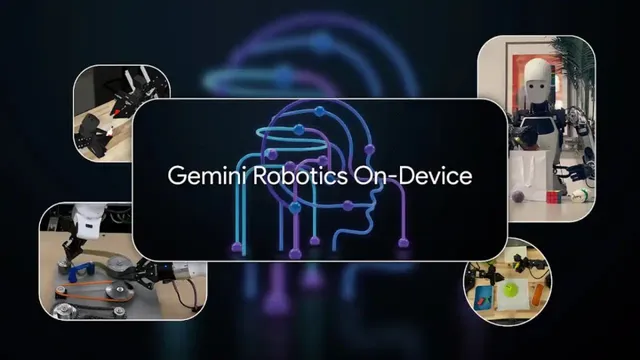- By Prateek Levi
- Wed, 25 Jun 2025 01:28 PM (IST)
- Source:JND
Google Gemini Robotics On-Dvice: Google has introduced a new version of its Gemini AI built specifically for robots—one that doesn’t need to stay connected to the internet. Called Gemini Robotics On-Device, this compact AI model brings local, real-time control to robotic systems, opening up new possibilities in environments like factory floors or remote sites where internet access is unreliable or latency must be kept to a minimum.
Unlike cloud-based models, Gemini Robotics On-Device processes language, vision, and motor commands directly on the robot. That means it can follow natural language instructions and learn new tasks—such as folding clothes, zipping up bags, or pouring liquids—with just 50 to 100 demonstrations. It's designed to adapt quickly, making it ideal for fast-moving or unpredictable environments.
ALSO READ: iPhone 17 Pro And iPhone 17 Air Images Leak Online: This Is What The Camera Setup Might Look Like!
Built as a lightweight version of Google’s Gemini 2.0 architecture, this model maintains the ability to reason through multi-step tasks while running efficiently on limited hardware. And it’s not tied to a specific type of robot—it has already been successfully tested on multiple platforms, including the Apptronik Apollo humanoid and the bi-armed Franka FR3 robot.
To help developers tap into this new system, Google is offering early access to a Gemini Robotics SDK. Select developers can use the SDK to experiment with the model in MuJoCo simulations and fine-tune it for custom tasks. However, access remains limited as Google continues to evaluate real-world safety and performance.
Google says this step aligns with its internal AI Principles, with added layers of protection for physical and semantic safety. These include low-level safety controllers and a new semantic safety benchmark, overseen by the company’s Responsibility & Safety Council.
ALSO READ: BSNL Now Delivers SIM Cards To Your Home: Here’s How To Order BSNL SIM With Self-KYC Online
With Gemini Robotics On-Device, Google is pushing toward a future where robots can think and act on their own—without relying on the cloud. It’s a move that could reshape fields like logistics, manufacturing, and automation, making robots smarter, safer, and far more adaptable.

